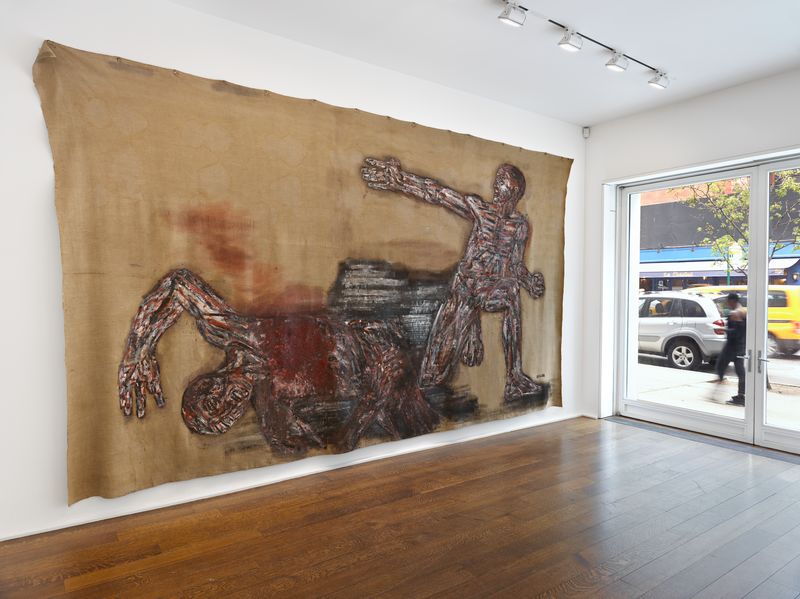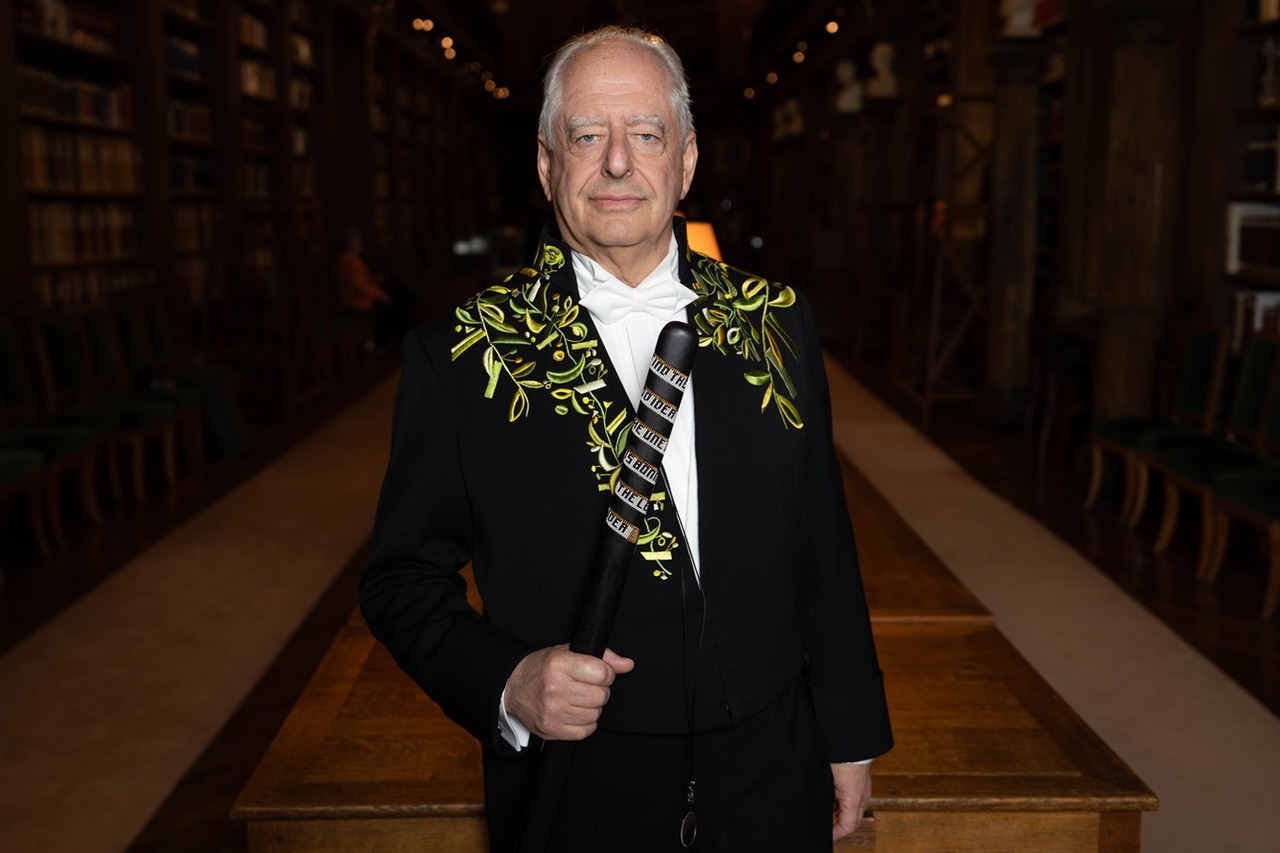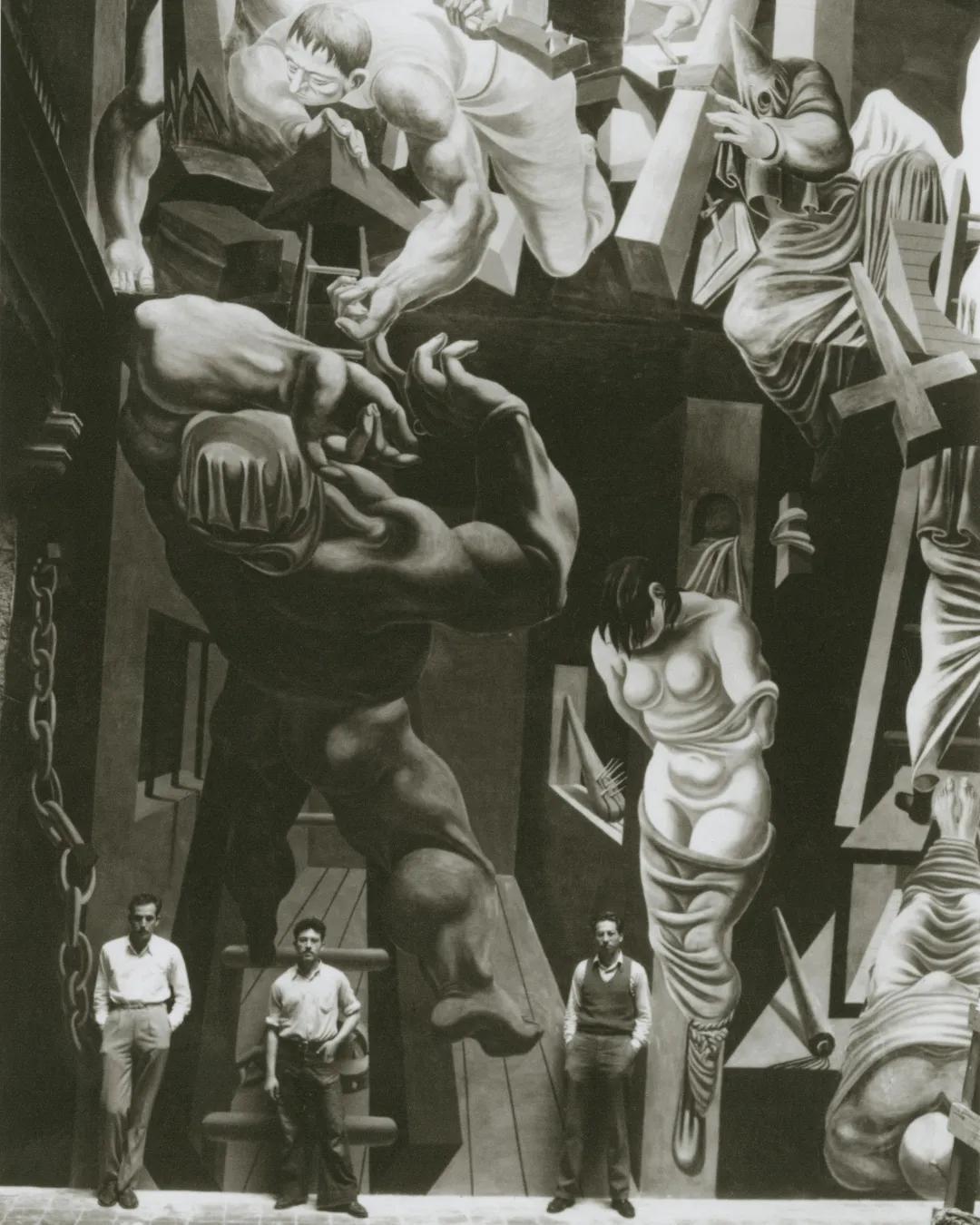Leon Golub at Hauser & Wirth reviewed by The Brooklyn Rail

Installation view, 'Leon Golub. Riot', Hauser & Wirth New York, 69th Street, 2015. Photo: Genevieve Hanson
Leon Golub at Hauser & Wirth reviewed by The Brooklyn Rail
The April 25 headline of the New York Times read, ‘Scenes of Chaos in Baltimore as Thousands Protest Freddie Gray’s Death.’
The article goes on to describe how a largely peaceful protest, staged in the wake of this country’s third publicly documented murder of a black youth by police in less than a year, gave way to looting and riots in the streets of Baltimore. The accompanying slideshow featured a suite of seven selected images, some of which highlight the calm nature of the initial protest, others documenting the tense standoff between demonstrators, police, and the National Guard.
On May 11th, merely two weeks after this story ran, Hauser & Wirth premiered an exhibition of the late Leon Golub’s work at its midtown location. ‘Riot,’ with its overarching themes of power, oppression, combat, and control, and spanning more than five decades of Golub’s career, couldn’t be more timely. ‘Napalm I,’ Golub’s historically scaled warhorse from 1969 located in the gallery’s front entryway, sets the tone of the show. Two nude figures occupy the vast majority of an otherwise raw linen canvas, their painted flesh, a mass of scraped crimson, black, and bone, barely visible over sinewy tendons and skeletal frames. One is fatally wounded, his chest seared and raw, an image made all the more palpable by Golub’s build up of muddy crimson brown sludge and the charred ground depicted underneath him.
The figure’s arm is bent at an unnatural angle over his lolling head as if trying to shield himself from the next oncoming blast of chemical spray. His attendant, another man similarly flayed, crouches by his side, arm outstretched, defiantly pointing to the invisible enemy. Golub’s imagery is heavily influenced by Greek and Roman statuary, and here, the composition is as classical as it is topical: two nude warriors, fallen, one on the verge of death as the other intrepidly attempts to extricate himself, as if to say we will not be silenced, nor held down.

Leon Golub, ‘Colossal Torso II,’ 1959. Photo: Andrew Smart, AC Cooper LTD
Although this series was originally made in response to atrocities perpetrated by the Vietnam War, the scene itself is timeless. The same (unfortunately) can be said of ‘Riot V’ (1987), which, painted almost a quarter of a century earlier, eerily foreshadows the aforementioned Baltimore images. Here, a group of seven men gather, crowded into the bottom half of the picture plane and framed in rubbed and scraped passages from the waist up.
In the foreground, a man of indeterminate ethnicity pushes forward into our viewing space. His arms are raised in what reads as a chilling reenactment of ‘Hands Up, Don’t Shoot,’ the gesture made internationally recognizable in the aftermath of Michael Brown’s death in Ferguson, Missouri, last summer. The sheer size of the 120 × 155-inch canvas adds to the scene’s overwhelming sense of implied physical danger, while the faces of the men, painted in muted tones of lavender, beige, and dusty blue, deny any determinate reading of events.
Golub often stated that he was intensely concerned with depictions of power ‘at the peripheries,’ where it takes on covert, extra-legal forms of control in order to subjugate dissidence of any type. ‘Riot V’ and other works like ‘Mercenaries II (section III)’ (1975), with its torn and cut compositional outline, reveal in visual terms the same structures of injustice that permit civil authorities to terrorize, maim, and even kill unarmed American citizens in the present. It is the threat latent in the potential violence of quotidian protest and its sanctioned oppression that lends the work its psychologically charged air.

Leon Golub, ‘Napalm I,’ 1969. Photo: Christopher Burke
But while the above events are undoubtedly located in a specific moment, Golub’s imagery transcends the temporal. His particular form of portraiture, the invocation of the ‘everyman,’ along with his universal themes of human struggle, injustice, and the exploitation of power, can be traced as far back as antiquity. Indeed, it is Golub’s intense fascination with these classical forms that determines the language behind many other works on view.
Most spectacular is ‘Colossal Torso III’ (1960), which features the headless torso and Hellenistic musculature reminiscent of friezes like those found on the Pergamon Altar. The figuration is so abstract as to be almost unrecognizable at first; upon closer examination, the many layers of built up lacquer reveal the hulking shape of a man whose flesh has been carefully drilled away in areas to reveal jewel-like cobalt, sea green, and umber tones below.
Situated alone in a sky lit side gallery of Hauser & Wirth’s space, these transparent layers shimmer with light, the effect akin to the look of stained glass on a cathedral floor—godlike, visionary, sublime. Violence is the world of men, Golub tells us in no uncertain terms, but so is his propensity for beauty. While this country’s forward march of the Right might be more comfortable with the division of these terms, Golub reminds us that the two are faces of the same coin, dangerous in their combinatory affect but explosive in their charge.
Duality drives these canvases—as Golub puts it, ‘the paralleling of sadism to the management of control.’ In front of them we are equally alive, connected, and repulsed, for in their subject matter as well as their execution, the images expose similar pathologies that have eaten away at the fabric of our being and our society, and have done so for quite some time.
In this knowledge and its confrontation, Golub believed, there was a freedom: the freedom to speak, the freedom to act. These canvases continue to do just that, some, more than 50 years after their creation. If only more artists were willing to speak this kind of truth to power.
Related News
1 / 5




